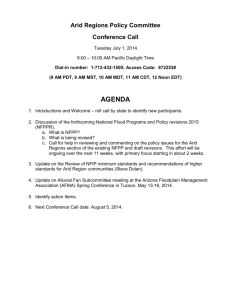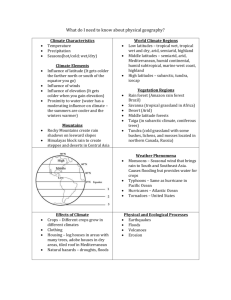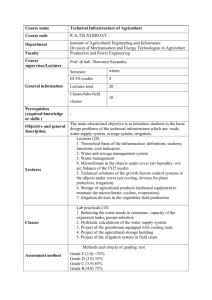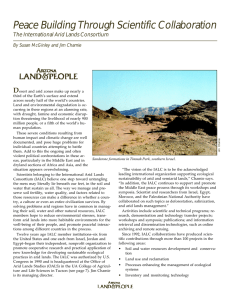Document 10829089
advertisement
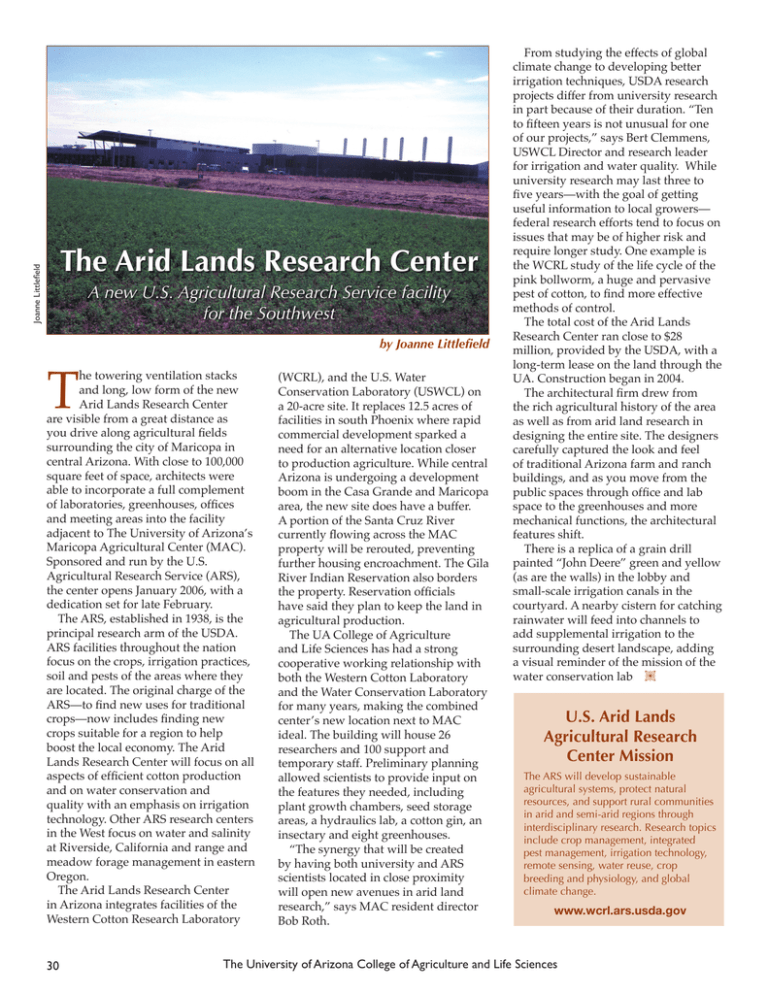
Joanne Littlefield The Arid Lands Research Center A new U.S. Agricultural Research Service facility for the Southwest by Joanne Littlefield T he towering ventilation stacks and long, low form of the new Arid Lands Research Center are visible from a great distance as you drive along agricultural fields surrounding the city of Maricopa in central Arizona. With close to 100,000 square feet of space, architects were able to incorporate a full complement of laboratories, greenhouses, offices and meeting areas into the facility adjacent to The University of Arizona’s Maricopa Agricultural Center (MAC). Sponsored and run by the U.S. Agricultural Research Service (ARS), the center opens January 2006, with a dedication set for late February. The ARS, established in 1938, is the principal research arm of the USDA. ARS facilities throughout the nation focus on the crops, irrigation practices, soil and pests of the areas where they are located. The original charge of the ARS—to find new uses for traditional crops—now includes finding new crops suitable for a region to help boost the local economy. The Arid Lands Research Center will focus on all aspects of efficient cotton production and on water conservation and quality with an emphasis on irrigation technology. Other ARS research centers in the West focus on water and salinity at Riverside, California and range and meadow forage management in eastern Oregon. The Arid Lands Research Center in Arizona integrates facilities of the Western Cotton Research Laboratory 30 (WCRL), and the U.S. Water Conservation Laboratory (USWCL) on a 20-acre site. It replaces 12.5 acres of facilities in south Phoenix where rapid commercial development sparked a need for an alternative location closer to production agriculture. While central Arizona is undergoing a development boom in the Casa Grande and Maricopa area, the new site does have a buffer. A portion of the Santa Cruz River currently flowing across the MAC property will be rerouted, preventing further housing encroachment. The Gila River Indian Reservation also borders the property. Reservation officials have said they plan to keep the land in agricultural production. The UA College of Agriculture and Life Sciences has had a strong cooperative working relationship with both the Western Cotton Laboratory and the Water Conservation Laboratory for many years, making the combined center’s new location next to MAC ideal. The building will house 26 researchers and 100 support and temporary staff. Preliminary planning allowed scientists to provide input on the features they needed, including plant growth chambers, seed storage areas, a hydraulics lab, a cotton gin, an insectary and eight greenhouses. “The synergy that will be created by having both university and ARS scientists located in close proximity will open new avenues in arid land research,” says MAC resident director Bob Roth. From studying the effects of global climate change to developing better irrigation techniques, USDA research projects differ from university research in part because of their duration. “Ten to fifteen years is not unusual for one of our projects,” says Bert Clemmens, USWCL Director and research leader for irrigation and water quality. While university research may last three to five years—with the goal of getting useful information to local growers— federal research efforts tend to focus on issues that may be of higher risk and require longer study. One example is the WCRL study of the life cycle of the pink bollworm, a huge and pervasive pest of cotton, to find more effective methods of control. The total cost of the Arid Lands Research Center ran close to $28 million, provided by the USDA, with a long-term lease on the land through the UA. Construction began in 2004. The architectural firm drew from the rich agricultural history of the area as well as from arid land research in designing the entire site. The designers carefully captured the look and feel of traditional Arizona farm and ranch buildings, and as you move from the public spaces through office and lab space to the greenhouses and more mechanical functions, the architectural features shift. There is a replica of a grain drill painted “John Deere” green and yellow (as are the walls) in the lobby and small-scale irrigation canals in the courtyard. A nearby cistern for catching rainwater will feed into channels to add supplemental irrigation to the surrounding desert landscape, adding a visual reminder of the mission of the water conservation lab. U.S. Arid Lands Agricultural Research Center Mission The ARS will develop sustainable agricultural systems, protect natural resources, and support rural communities in arid and semi-arid regions through interdisciplinary research. Research topics include crop management, integrated pest management, irrigation technology, remote sensing, water reuse, crop breeding and physiology, and global climate change. www.wcrl.ars.usda.gov The University of Arizona College of Agriculture and Life Sciences

